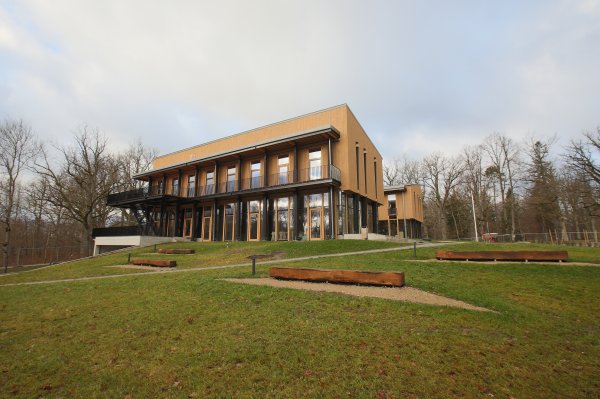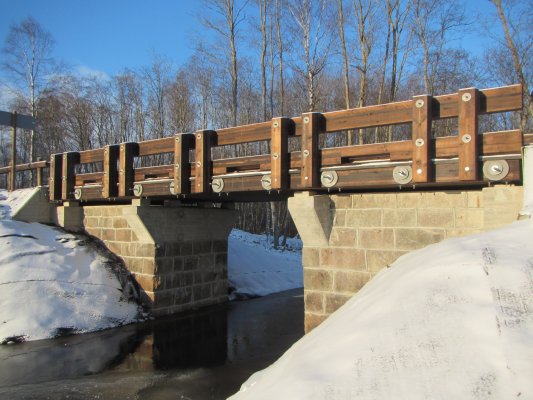LVM Receives Awards in the Best Building of the Year 2016 Contest
The show "Best Building of the Year in Latvia 2016" organised by the Latvian Building Engineers Association and the Latvian Association of Civil Engineers in co-operation with 13 major organisations of the construction sector has come to an end. The grand award was presented to two structures: JSC "Latvia's State Forests" (LVM) Customer Centre in Dundaga and kindergarten and school "Exupéry International School" building in Piņķi. The renovated bridge over the River Menčupīte in Kocēni Municipality ranked third in the category "Reconstruction of Engineering Structure".
Both LVM buildings Northern Kurzeme Regional Customer Centre in Dundaga, and the wooden bridge over the River Menčupīte are special because of the use of environmentally-friendly and innovative solutions. Building structures of the Customer Centre are made of exposed glued wood, insulation is made of wooden fibres, wall, ceiling and floor finish - of wooden materials. In the reconstruction process of the bridge over the River Menčupīte, its historical values and characteristics have been preserved. This is the first bridge in Latvia that is intended for road traffic and is made of prestressed glued wooden structures, in the construction of which two natural materials - stone and wood - have been used.
"The greatest recognition should be expressed to the builder "Selva Būve" Ltd. and the designer “5. iela” Ltd., the outstanding performance of which helped implementing this call for the whole society to use wood more extensively in the construction of buildings. Wood is a living, safe and natural building material. Latvians have long traditions in the use of timber, and they have always been creative in its application. With this wooden building in Dundaga we have once again proved that we are willing and able to change things," says Valdis Kalns, Head of LVM Real Estate.
It is already the 19th year that the Building of the Year awards are presented. The show is organised by the Latvian Building Engineers Association and the Latvian Association of Civil Engineers. The facilities applied for the contest are evaluated in the following categories: "New Public Building", "Reconstruction," "Restoration," "Landscape". The jury consisting of 30 members includes practitioners of construction sector non-governmental organisations, as well as construction sector teaching staff.




